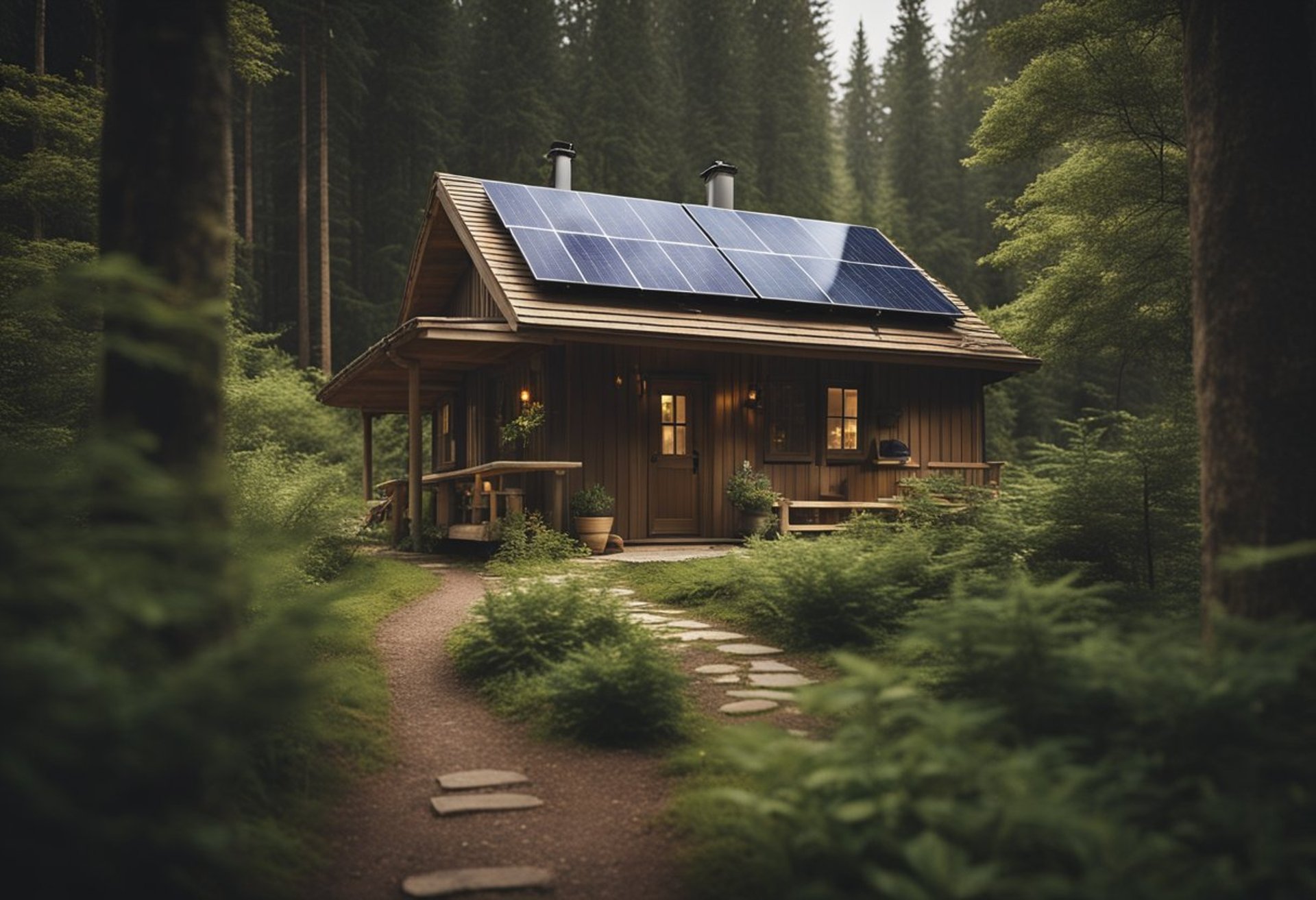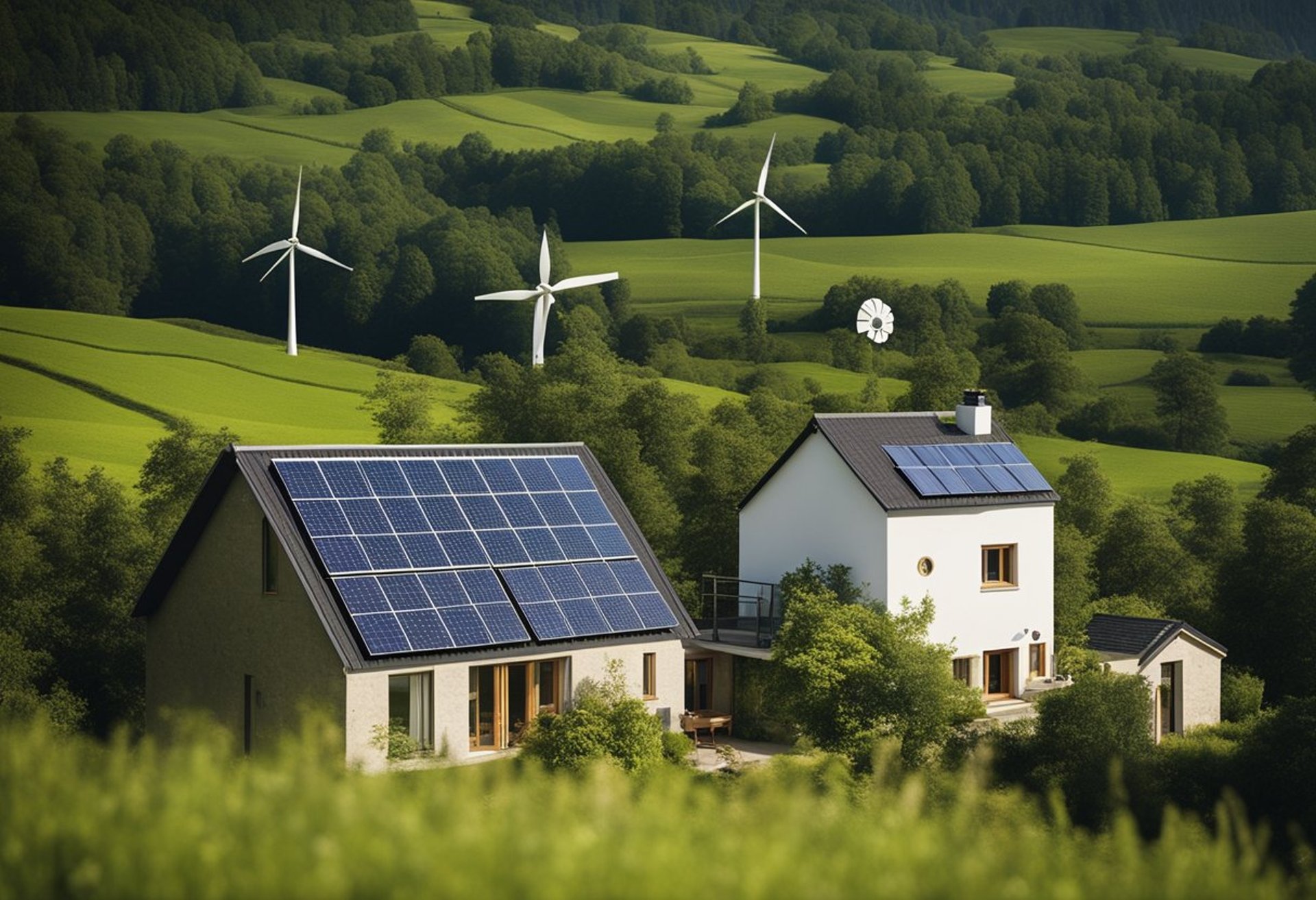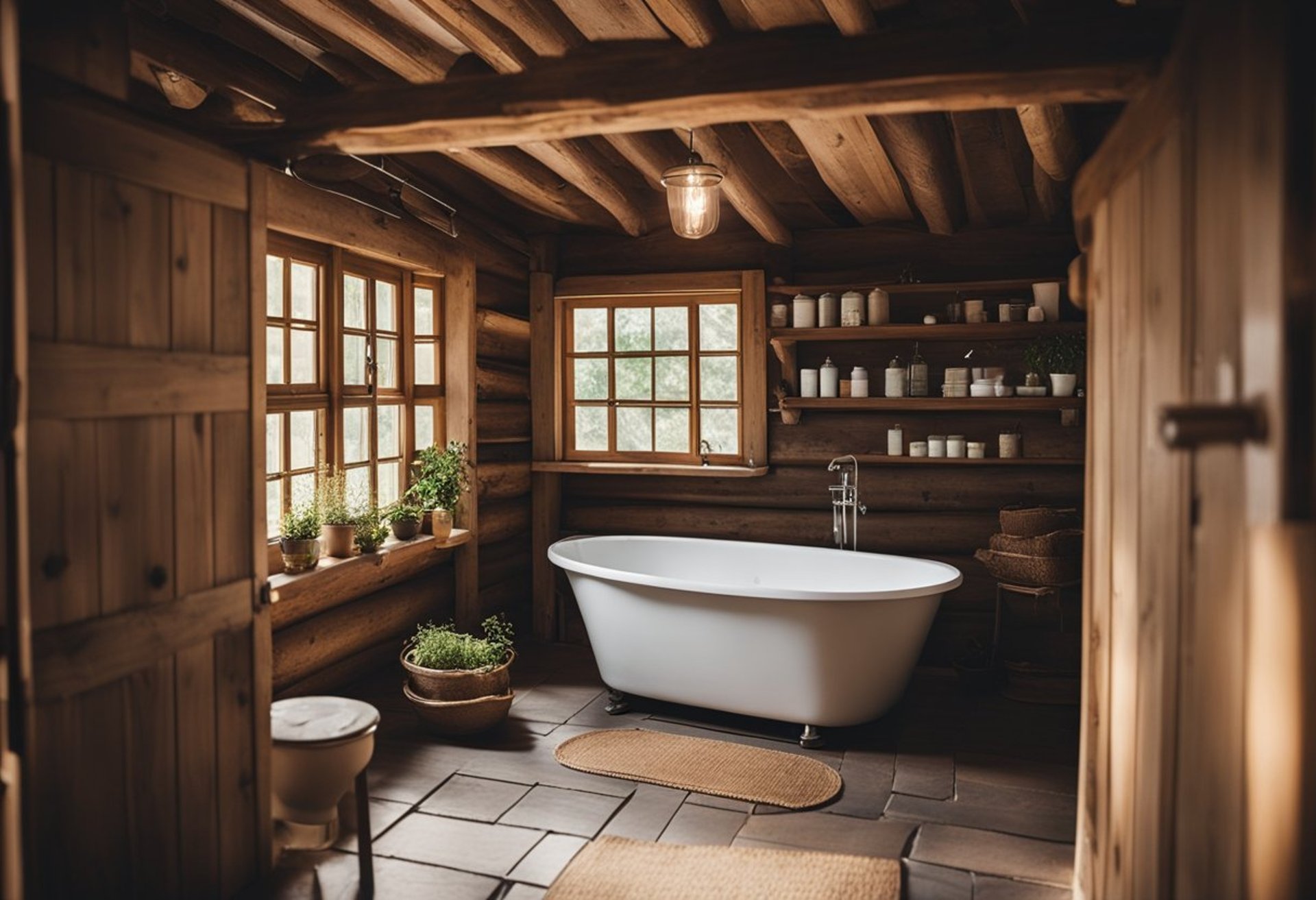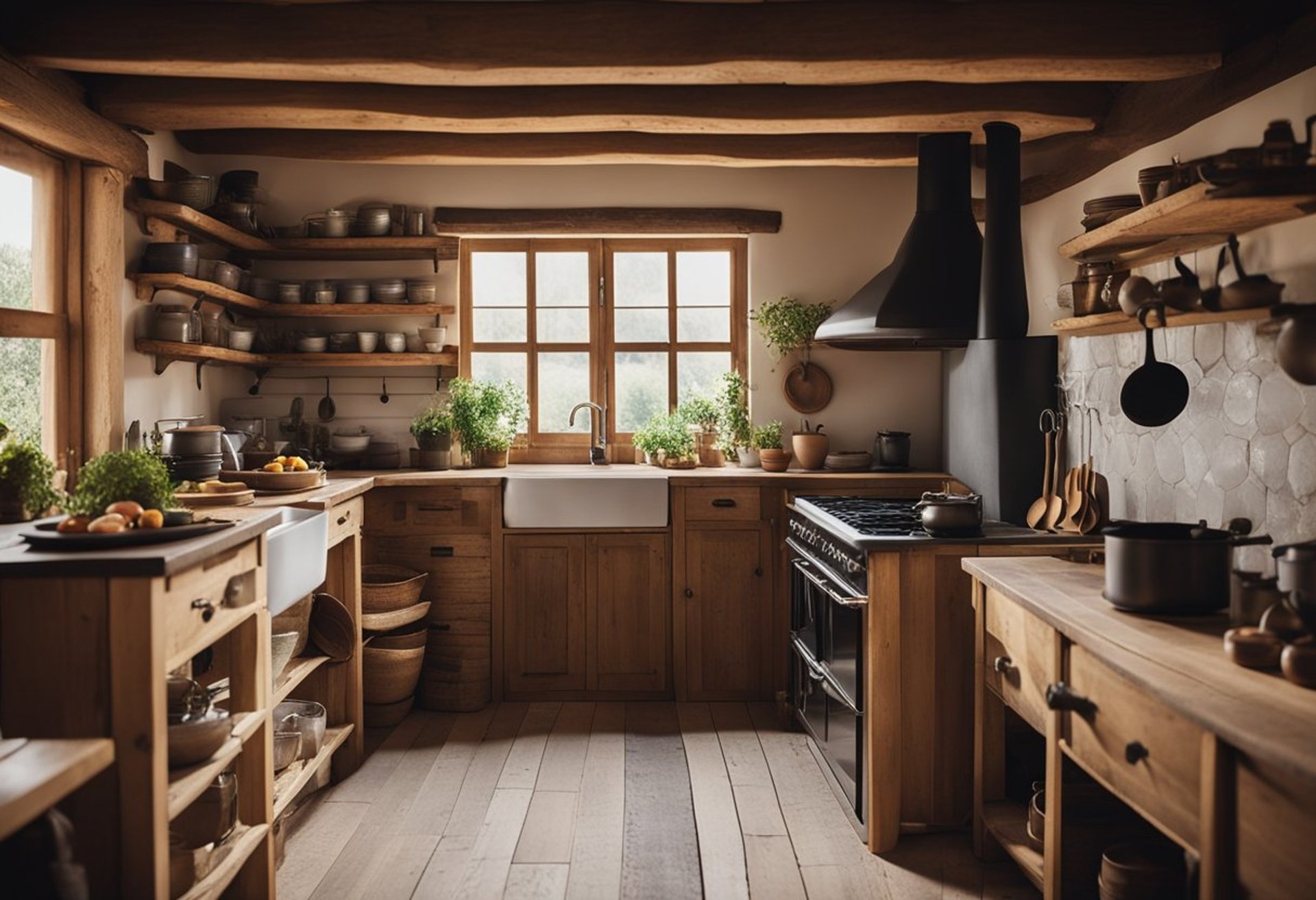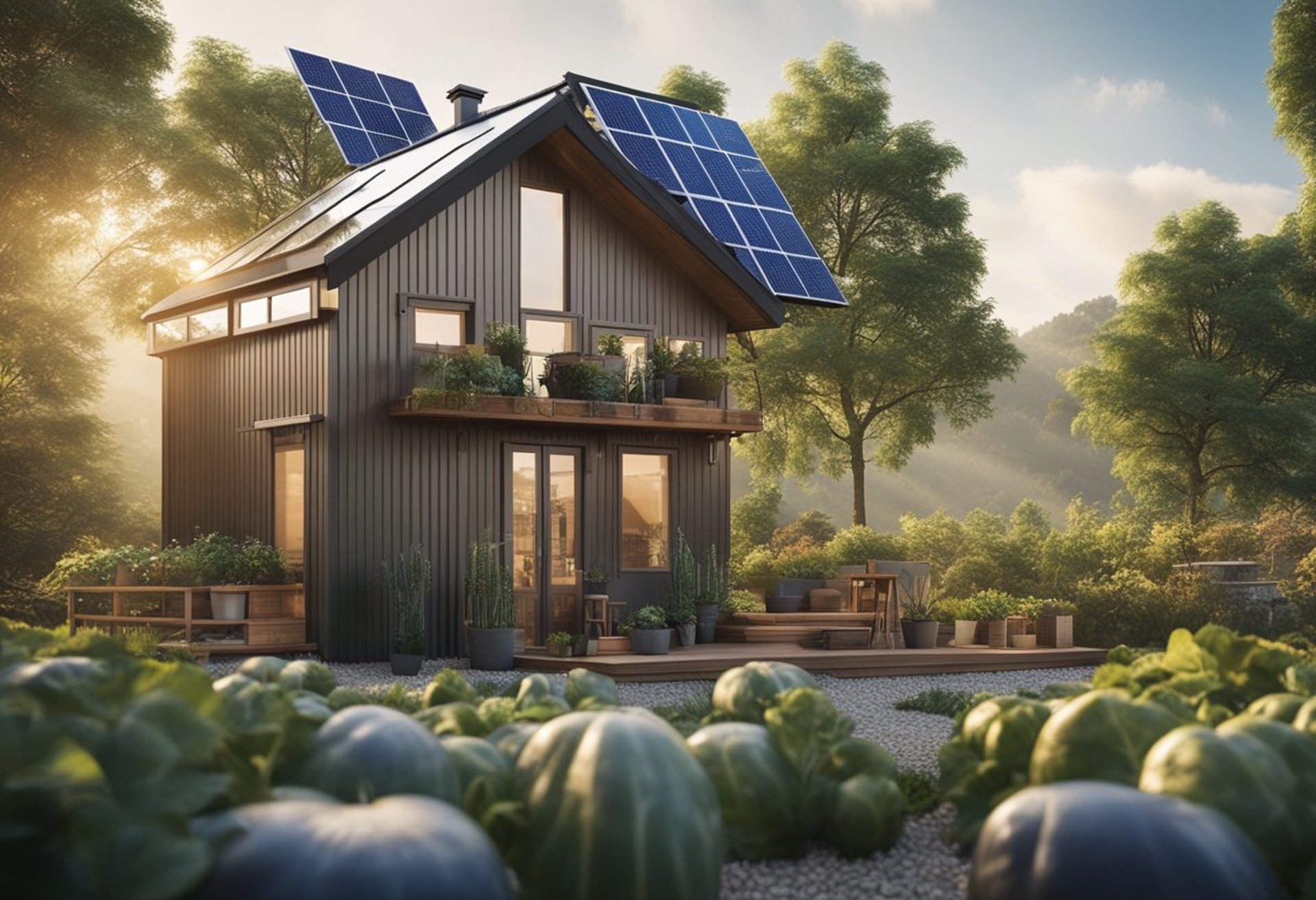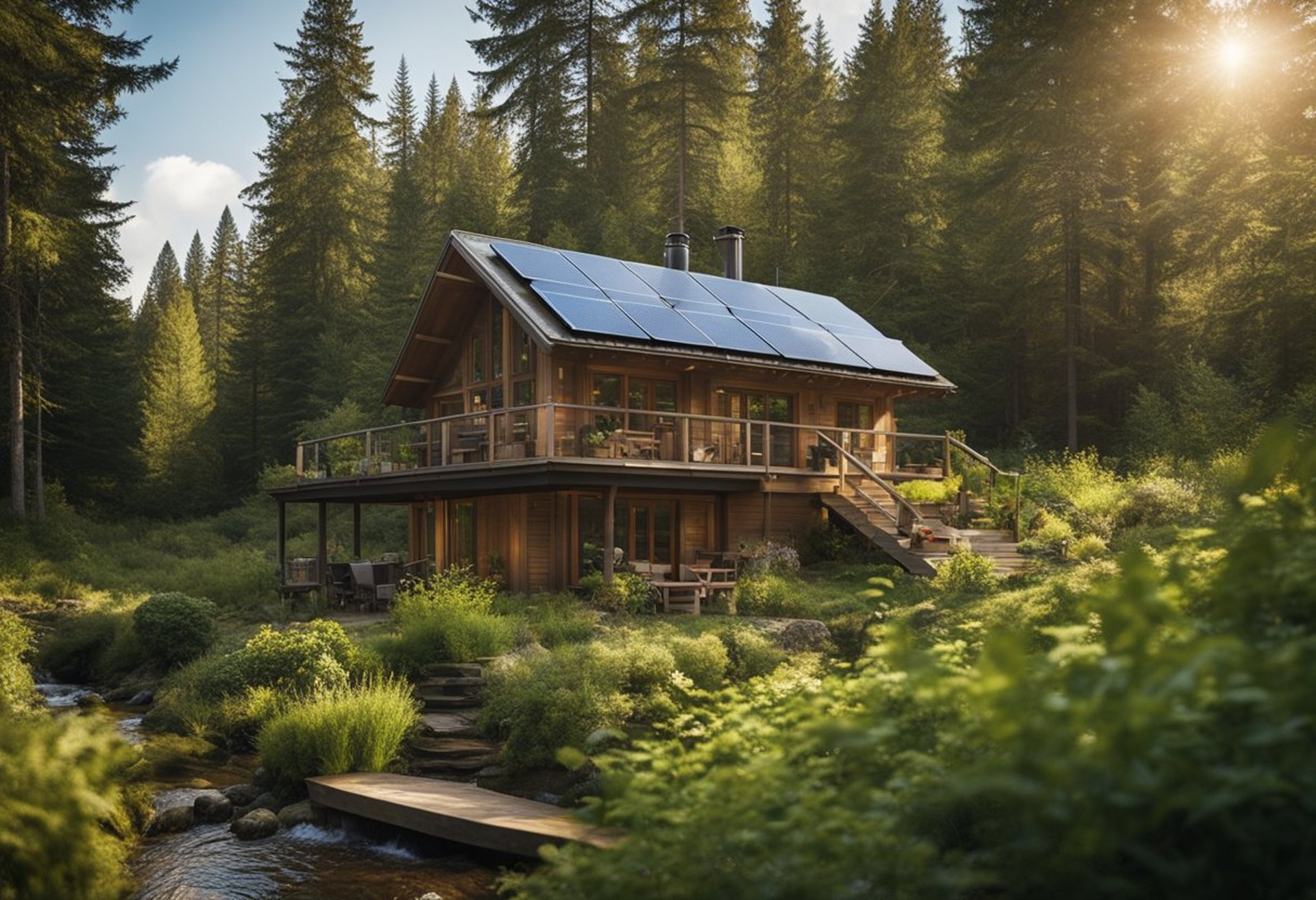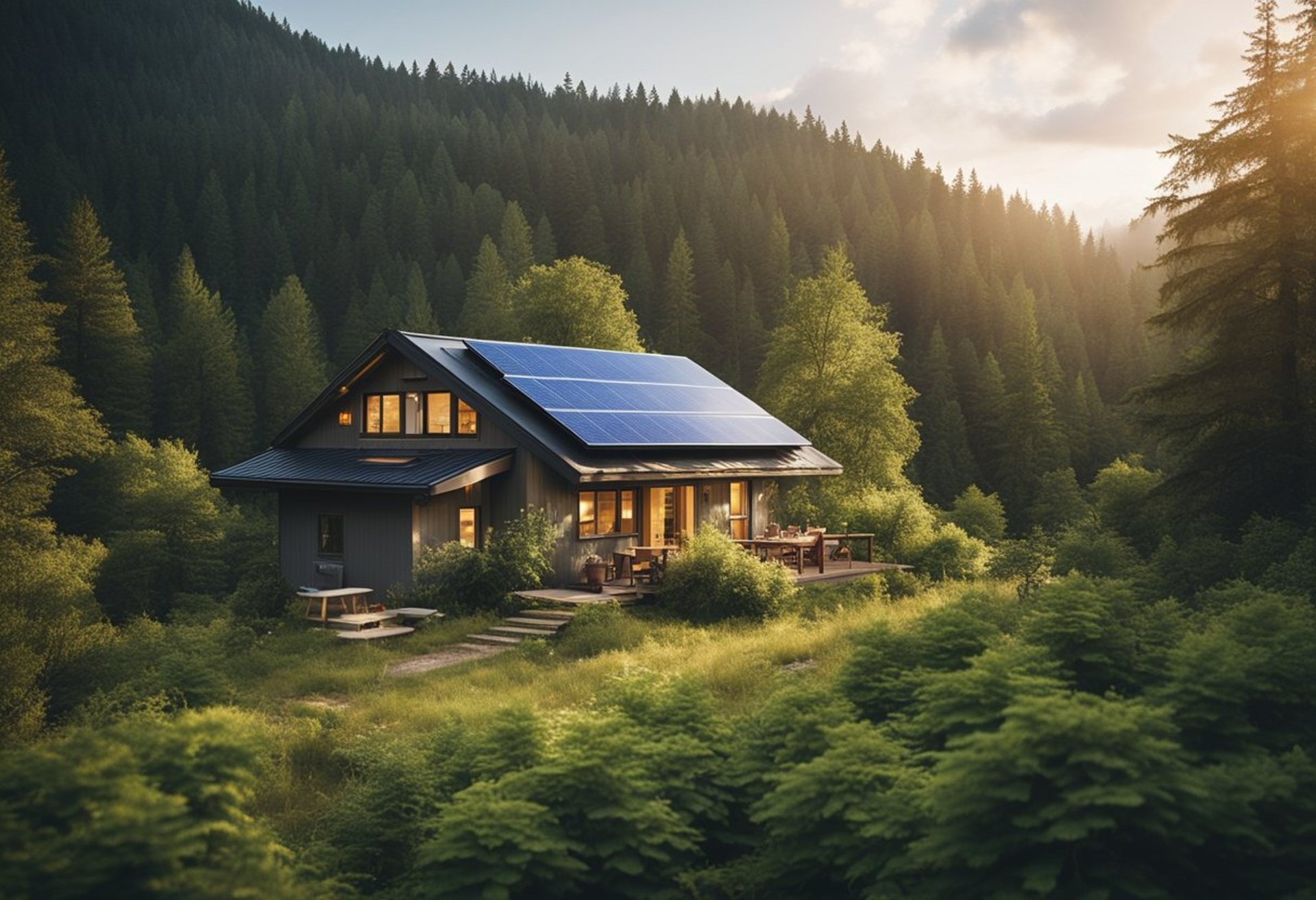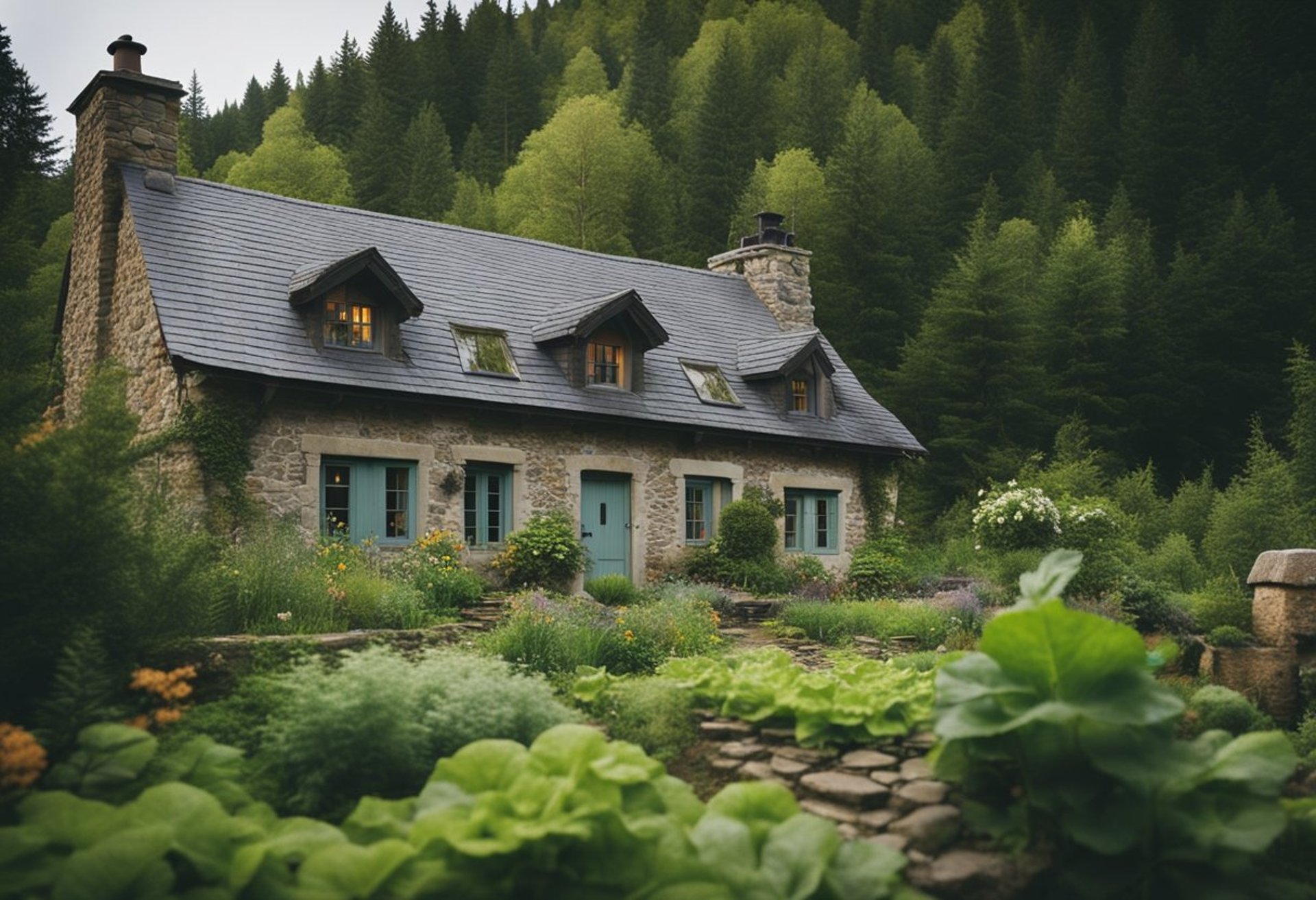Off the Grid Cottage: Embrace Sustainable Living in Nature's Embrace
The allure of an off-the-grid cottage captivates many who seek solace and sustainability. Building a retreat that is self-sufficient not only allows for a closer connection to nature but also offers freedom from modern utilities. For those eager to embrace this lifestyle, creating an off-grid cottage involves careful planning and thoughtful design that prioritizes sustainability and comfort.
Off the Grid Cottage: Embrace Sustainable Living in Nature's Embrace
The allure of an off-the-grid cottage captivates many who seek solace and sustainability. Building a retreat that is self-sufficient not only allows for a closer connection to nature but also offers freedom from modern utilities. For those eager to embrace this lifestyle, creating an off-grid cottage involves careful planning and thoughtful design that prioritizes sustainability and comfort.
Designing an off-grid cottage requires an understanding of renewable resources and efficient space management. The choice of materials, energy sources, and various amenities can significantly impact both the living experience and the ecological footprint. Individuals venturing into this lifestyle will find that each decision shapes the harmony between comfort and environmental responsibility.
With this lifestyle becoming more popular, it is essential to explore practical insights and strategies for successful implementation. Whether it's understanding essential amenities or innovative kitchen designs, there are many facets to consider when getting started.
Key Takeaways
Off-grid living promotes sustainability and self-sufficiency.
Thoughtful design enhances comfort in an off-grid cottage.
Renewable energy sources play a crucial role in this lifestyle.
Principles of Off-Grid Living
Off-grid living emphasizes self-reliance and sustainability. Key principles include generating energy independently and implementing effective water and waste management systems. By understanding these elements, individuals can effectively create a functional and sustainable off-grid cottage.
Energy Self-Sufficiency
Energy self-sufficiency is crucial for off-grid living. It typically involves utilizing renewable energy sources, such as solar panels or wind turbines.
Solar panels can harness sunlight to produce electricity. This method requires an inverter and battery storage to utilize the energy efficiently. She can choose a system designed to meet her energy needs based on household consumption.
Wind turbines can also supplement energy needs, particularly in areas with consistent wind. They convert wind into electricity and can be combined with solar options for reliability.
Ultimately, integrating various energy sources enhances resilience and ensures consistent power supply in an off-grid home.
Water and Waste Management
Effective water and waste management strategies are vital for maintaining a sustainable lifestyle. Off-grid cottages often rely on rainwater harvesting systems, which collect and store rainwater for use. This can be achieved through gutters and storage tanks.
Filtration systems are essential for ensuring water purity. Simple methods like sand filters or more advanced options like UV purification can be employed based on specific needs.
Waste management is equally important. Composting toilets are a popular choice, minimizing water use while providing nutrient-rich compost.
Additionally, a greywater system can recycle water from sinks and showers for irrigation, further optimizing water use. These practices promote environmental stewardship and ensure a self-sustaining living environment.
Designing Your Off-Grid Cottage
Creating an off-grid cottage requires careful planning and consideration. Key design aspects include architectural features that promote sustainability and energy efficiency, as well as the selection of materials that enhance insulation and durability.
Architectural Considerations
The design should maximize natural light and ventilation, crucial for reducing energy use. Large south-facing windows can capture sunlight, helping to heat the space passively.
Incorporating overhangs can protect windows from excessive heat during the summer. This strategy balances temperature control throughout the year.
The structure may include open floor plans that encourage airflow and make small spaces feel larger. Additionally, integrating renewable energy systems, like solar panels, into the design enhances self-sufficiency.
Materials and Insulation
Choosing the right materials is vital for reducing environmental impact and enhancing longevity. Wood is popular due to its availability and insulation properties. Consider using reclaimed wood for sustainability.
For insulation, materials like sheep's wool or straw bales are effective and eco-friendly. These options offer excellent thermal performance, keeping the cottage warm in winter and cool in summer.
Moreover, using local stone for foundations ensures durability while minimizing transportation emissions. A combination of high-quality insulation and sustainable materials will help make the cottage truly off-grid.
Essential Amenities for Off-Grid Cottages
To live comfortably off the grid, selecting the right amenities is crucial. Key components include efficient heating and cooling systems, alongside reliable lighting and electrical appliances. Each element plays a significant role in ensuring a sustainable and enjoyable living environment.
Heating and Cooling Systems
Effective heating and cooling systems are fundamental in off-grid cottages. Wood stoves provide a traditional heating method, using cordwood or pellets. This option requires initial setup and a steady supply of fuel, but it offers reliability.
Solar heating can complement this by harnessing the sun's energy. Solar panels paired with a thermal storage system help maintain comfortable temperatures year-round.
For cooling, passive ventilation techniques are beneficial. Designing airflow through strategically placed windows and vents minimizes reliance on energy. Additionally, evaporative coolers are energy-efficient, particularly in dry climates, using minimal electricity to provide cooling.
Lighting and Electrical Appliances
Off-grid living often requires alternative lighting and electrical solutions. LED lights are an excellent choice due to their low energy consumption. They provide bright illumination with a longer lifespan, making them ideal for remote settings.
Solar-powered lights can illuminate pathways and outdoor areas while significantly reducing energy needs. Charging systems for devices should prioritize deep cycle batteries or solar battery banks to store energy for night use.
When selecting appliances, opting for energy-efficient models is essential. Propane appliances—like stoves, refrigerators, and water heaters—offer effective alternatives that consume less energy. A 12V DC refrigerator can also operate on low-energy solar systems, ensuring food preservation without compromising grid independence.
Off-Grid Kitchen Design
An off-grid kitchen focuses on sustainability and efficiency, utilizing renewable energy and effective storage solutions. For those designing an off-grid cabin kitchen, careful consideration of energy-efficient appliances and food preservation methods is essential.
Energy-Efficient Appliances
Selecting the right appliances is crucial. Off-grid kitchens should prioritize energy-efficient options such as:
Propane refrigerators: Use less energy than electric models, making them ideal for remote locations.
Solar-powered cookers: Harness sunlight for cooking without consuming additional energy sources.
Compostable dishware: Reduces waste while offering convenience.
Using LED lighting enhances visibility while consuming minimal electricity. Integrating a solar battery system ensures that appliances operate consistently.
Additionally, consider multifunctional appliances, such as a blender that can also cook, reducing the number of devices needed. This approach maximizes space and utility while minimizing energy usage.
Food Storage and Preservation
Efficient food storage in an off-grid environment is vital for maintaining freshness and minimizing waste. Key strategies include:
Root cellars: Natural temperature regulation helps store vegetables and fruits for extended periods.
Vacuum sealers: Remove air from packaging, keeping food fresh longer and saving space.
Canning: Preserves seasonal produce by sealing it in jars, providing a sustainable food source year-round.
Proper planning for food storage is essential. Utilizing shelving or hanging systems can optimize space in smaller kitchens.
Additionally, incorporating natural preservation methods, such as drying herbs and fruits, increases food longevity. This approach respects the principles of sustainability inherent to off-grid living.
Off-Grid Bathroom Solutions
Creating a functional bathroom in an off-grid cottage requires consideration of alternatives to traditional plumbing systems. Sustainable and efficient solutions are key to maintaining comfort while adhering to off-grid principles.
Toilet Options
When selecting a toilet for an off-grid bathroom, composting toilets stand out as a popular choice. These toilets operate without water, converting human waste into compost through aerobic decomposition.
Benefits of composting toilets:
Water conservation: They use little to no water, promoting sustainability.
Odor control: Modern designs effectively manage odors.
Ease of installation: They require minimal plumbing, making them ideal for cabins.
Another option is the incinerating toilet, which uses heat to dispose of waste. This option requires electricity but can be beneficial in remote locations where waste disposal is challenging.
Showering and Hygiene
For showering in an off-grid cottage, several systems can provide a practical solution. Solar shower bags are simple and effective. These bags can be filled with water and heated by the sun, providing an outdoor shower experience.
Key features of solar showers:
Portability: Easily transportable and lightweight.
Cost-effective: Minimal investment with significant rewards.
An alternative is a gravity-fed shower system, utilizing a larger water tank positioned higher up. This system relies on gravity to create water pressure, offering a sustainable method to keep clean.
Hygiene can also be maintained through sponge baths using heated water in bowls. Utilizing biodegradable soap ensures environmental responsibility while promoting cleanliness.
Renewable Energy Sources
Off-grid cottages often rely on renewable energy to provide a sustainable and independent power supply. Two popular options are solar power systems and small-scale wind or hydro power generation.
Solar Power Systems
Solar power systems are among the most common choices for off-grid cottages. They use photovoltaic panels to convert sunlight into electricity.
Components: A typical solar setup includes solar panels, an inverter, batteries for energy storage, and a charge controller.
Advantages: Once installed, solar panels have low maintenance requirements and can generate power for many years. They are highly effective in sunny locations.
Considerations: The initial investment can be significant, but various incentives are often available. Sizing the system correctly is essential to ensure adequate power generation year-round.
Wind and Hydro Power
Wind and hydro power are alternative renewable sources that can complement solar systems.
Wind Power: Small wind turbines can harness wind energy to generate electricity. They are particularly useful in areas with consistent wind patterns.
Hydro Power: If a cottage is near a flowing river, micro-hydro systems can provide reliable power.
Systems: Both wind and hydro setups require an initial investment and space for installation. Maintenance is necessary to ensure efficiency.
Each option has unique benefits and challenges. Choosing the right system depends on location, resources, and energy needs.
Building Your Off-Grid Cottage
Constructing an off-grid cottage requires careful consideration of planning and the methods used for construction. The following aspects are essential to ensure a functional and sustainable living space.
Planning and Permits
Before starting construction, it is crucial to investigate local regulations. Many areas have specific zoning laws that must be adhered to. Key steps include:
Research local building codes to ensure compliance.
Obtain necessary permits for construction, utilities, and sewage systems.
Consider environmental impact assessments if required.
It's also vital to plan the layout and orientation of the cottage for optimal sunlight and shelter from harsh winds. This can contribute to energy efficiency and comfort. Sustainable practices, such as using local materials and methods, should be incorporated to reduce environmental impact.
Construction Methods
Various construction methods can be employed when building an off-grid cottage. Each method has distinct advantages based on budgets and personal preferences. Some common options include:
Log Cabins: Durable and naturally insulating, requiring minimal maintenance.
Earth Sheltering: Utilizes natural terrain for temperature regulation and protection.
Straw Bale Construction: Provides excellent insulation and is environmentally friendly.
It is important to choose materials that promote sustainability and energy efficiency. Incorporating renewable energy sources, such as solar panels or wind turbines, can enhance the cottage's self-sufficiency. Ultimately, the method chosen should align with the desired lifestyle and environmental goals.
Living Off the Grid
Living off the grid requires careful planning and adaptability. Daily life encompasses a unique set of challenges while community support becomes crucial for long-term success.
Daily Life and Challenges
Daily life in an off-grid cottage often revolves around self-sufficiency. Residents manage their own sources of energy, water, and food. Solar panels may provide electricity, while rainwater systems can supply water.
In terms of food, many off-gridders cultivate gardens and raise livestock. This lifestyle presents challenges like pests, weather fluctuations, and sustainability.
Time management is vital; tasks include maintenance of systems, gardening, and food preservation. Adapting to these routines requires resourcefulness and a proactive approach to problem-solving.
Community and Networking
Building a strong community is essential for those living off the grid. Many rely on local networks for support, sharing resources, and exchanging knowledge.
Workshops and gatherings foster relationships among off-gridders. These events often include skill-sharing sessions on topics such as permaculture, renewable energy, and sustainable living.
Online platforms also play a role in connecting individuals. Social media groups and forums allow for the exchange of ideas and solutions, enhancing resilience in isolated living.
Networking can lead to collaboration on projects, from building infrastructure to organizing bulk purchases of supplies. Such connections contribute to a more sustainable lifestyle and a supportive environment.
Sustainable Practices
Sustainable practices are vital for off-the-grid cottages. They encompass methods that enhance self-sufficiency while minimizing environmental impact. Implementing permaculture principles and effective waste management are key components of sustainability.
Permaculture and Gardening
Permaculture focuses on designing agricultural ecosystems that are sustainable and self-sufficient. He or she can create a garden that mimics natural ecosystems, promoting biodiversity.
Key elements include:
Companion planting: Utilizing plants that benefit each other and reduce pests.
Crop rotation: Preventing soil depletion by alternating crops.
Water conservation: Techniques such as rainwater harvesting and drip irrigation optimize water use.
Incorporating native plants enhances resilience, as they require less maintenance and resources. An off-the-grid cottage allows for seasonal gardening, ensuring fresh produce year-round.
Waste Reduction and Composting
Waste reduction is essential for sustainability. He or she can implement practices to minimize waste creation, focusing on reusing and recycling materials.
Effective strategies include:
Minimal packaging: Choosing products with less packaging helps reduce waste.
Reusable containers: Opt for containers that can be used multiple times instead of single-use items.
Composting is another critical practice. By composting kitchen scraps and yard waste, organic matter converts into nutrient-rich soil. This process reduces landfill waste and enriches garden soil.
To create a compost system, follow these steps:
Choose a bin or designated area.
Layer green (nitrogen-rich) and brown (carbon-rich) materials.
Turn the compost regularly to aerate.
These practices contribute to a sustainable living environment in an off-the-grid cottage.

